Helmet Of Meskalamdug – Sumerian King Of The First Dynasty Of Ur
A. Sutherland - AncientPages.com - Sir Leonard Woolley found the gold helmet of King Meskalamdug (Mes-Kalam-Dug ) (1880 – 1960), a British archaeologist best known for excavating Ur in Mesopotamia.
 Electrotype copy of the Gold Helmet of Meskalamdug from Ur (Original, dated to 2600 BC and discovered in the Royal Cemetery of Ur, is now in the Iraq Museum.
Electrotype copy of the Gold Helmet of Meskalamdug from Ur (Original, dated to 2600 BC and discovered in the Royal Cemetery of Ur, is now in the Iraq Museum.
Meskalamdug (Mes-Kalam-Dug ) - ("hero of the good land") was an early Sumerian king of the First Dynasty of Ur in the 26th century BC.
He does not appear in the Sumerian King List. Still, He is known from a royal cylinder seal found in the Royal Cemetery at Ur, a royal bead inscription found in Mari, both mentioning him as King, and possibly his tomb, grave PG 755 at the Royal Cemetery at Ur.
From an inscription on a lapis lazuli bead found at Mari, we know that the royal Meskalamdug took the title King of Kish and was the father of Mesannepada. However, one vessel in the young man's grave had an inscription named "Ninbanda." She was called "queen," but it is still problematic to determine women's identity.
Was she the wife of Meskalamdug, the King? Or perhaps she was the wife of Mesannepada?
An inscription from the city of Mari informs that Meskalamdug is the father of Mesanepada ("Youngling chosen by An"), the ruler listed for the First Dynasty of Ur (ca. the 26th century BC).
The name 'Meskalamdug' appears on inscriptions found in two graves from the royal cemetery of Ur, unearthed in 1924 by Sir Woolley. In one grave with the remains of a woman, archaeologists also found a cylindrical seal with the inscription "Meskalamdug, King." It could indicate a sacrifice made in his name during the funeral. Made of shell, with a core in lapis-lazuli, the seal depicts two crossed lions attacking bulls, with Enkidu and a naked man in profile participating in the fight.
The second grave includes two golden bowls and a golden shell-shaped lamp, on which the name "Meskalamdug" was engraved. The excavation of this grave revealed the famous helmet of Meskalamdug, a golden artifact in the form of a wig with finely sculpted hair. Another artifact from the city of Mari was a bead from lapis-lazuli bearing the inscription of Mesanepada.
This inscription mentions Meskalamduga as the father of Mesanepada.
The helmet, 22.7cm high, 27 cm long, and 21 cm wide, was meticulously made from a single sheet of gold. It is shaped like a wig with carved curls, and the bun at the back was created for the King's hair. The wig-like pattern was hammered from the inside of the helmet. The holes around the edge were placed so a cloth lining could be sewn in to make it more comfortable.
This kind of helmet (instead of parade armor, not used in battle) was believed to be worn only by kings and high-ranking dignitaries.
Meskalamdug's tomb represents one of the Royal Tombs of Ur of the Chaldees, a city mentioned in the Hebrew Bible as the birthplace of the Jewish patriarch Abraham; however, the city's location has been debated. One of the graves investigated by Sir Woolley mainly contained valuable and fascinating objects. A man's body was discovered in a wooden coffin at the shaft's bottom.
Findings around the coffin include many remarkable artifacts such as spears and vases of alabaster and clay, gold-mounted daggers, copper daggers and tools, fifty copper bowls, silver bowls, and plates.
Inside the coffin, the found remains included the body, a gold dagger, lapis lazuli, gold beads, two gold bowls, and a gold lamp. Beside the decayed skull was a helmet of beaten gold. A cuneiform inscription on two bowls and the lamp read 'Meskalamdug.' The same name (and the word 'lugal') was also carved on a cylinder seal found in another tomb, and 'lugal' - King.
"One particularly rich tomb that Woolley did not include among the royal tombs, in large part because it did not have a tomb chamber or retainers, nevertheless stands out. PG 755 consisted of a rectangular pit measuring 2.50 by 1.50 meters with artifacts the likes of which Woolley had found only in royal tombs.
In the coffin, for example, were gold and silver lamps and a second gold bowl inscribed with the name Meskalamdug. Not far from the body, a larger collection of jewelry was found, including a copper pin usually worn by women in the royal tombs, with ahead in the form of a squatting monkey. It is believed that the jewelry was a gift to be presented to underworld deities. Outside the coffin was, as Sir Woolley noted, a "bewildering" number of artifacts, including metal vessels inscribed with the names "Meskalamdug" and Ninbanda, the queen.." 1
The honorable and traditional title of the King of Kish was reserved for those who ruled over the regions of Sumer and Akkad.
Some of the Kish rulers' names refer to Akkad, which suggests the early consolidation of Semitic power located in the northern part of Lower Mesopotamia. The King of Kish was often an Akkadian ruler who dominated Sumer.
Written by – A. Sutherland AncientPages.com Staff Writer
Updated on January 5, 2024
Copyright © AncientPages.com All rights reserved. This material may not be published, broadcast, rewritten or redistributed in whole or part without the express written permission of AncientPages.com
Expand for referencesReferences:
- Donald P. Hansen, Holly Pittman, "Treasures from the Royal Tombs of Ur"
(Univ. Of Pennsylvania Pr, Univ. of Pennsylvania. Museum of Archaeology and Anthropology)
R. L. Zettler, L. Horne, Treasures from the Royal Tombs of Ur
M. Baizerman, Dawn and Sunset: A Tale of the Oldest Cities in the Near East
More From Ancient Pages
-
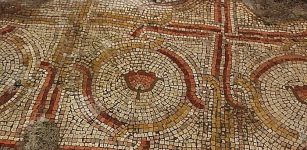 Ancient Mosaic Floor Decorated With Colorful Floral Designs Re-Uncovered After 40 Years
Archaeology | Mar 25, 2023
Ancient Mosaic Floor Decorated With Colorful Floral Designs Re-Uncovered After 40 Years
Archaeology | Mar 25, 2023 -
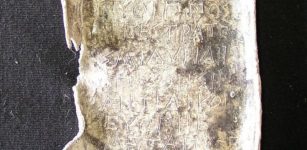 Curse Tablets With Messages To The Gods Of The Underworld Found In 2,500-Year-Old Well
Archaeology | Feb 7, 2020
Curse Tablets With Messages To The Gods Of The Underworld Found In 2,500-Year-Old Well
Archaeology | Feb 7, 2020 -
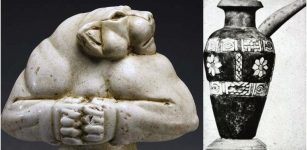 Mesopotamian City Jemdet Nasr Dated To 3100–2900 BC: Sophisticated Irrigation Techniques And Earliest Cylinder Seals
Featured Stories | Dec 18, 2016
Mesopotamian City Jemdet Nasr Dated To 3100–2900 BC: Sophisticated Irrigation Techniques And Earliest Cylinder Seals
Featured Stories | Dec 18, 2016 -
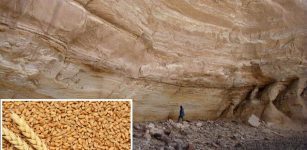 10,000-Year-Old Seeds Offer First Evidence Of Farming In A Green Sahara
Archaeology | Mar 19, 2018
10,000-Year-Old Seeds Offer First Evidence Of Farming In A Green Sahara
Archaeology | Mar 19, 2018 -
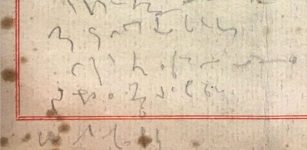 Who Can Solve The Shackleton Scribble Mystery?
Artifacts | Sep 13, 2017
Who Can Solve The Shackleton Scribble Mystery?
Artifacts | Sep 13, 2017 -
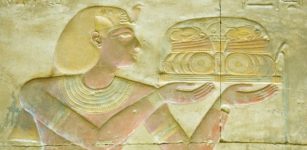 Table Manners And First Code Of Correct Behavior Were Introduced In Egypt 2,500 B.C. By Ptahhotep
Ancient History Facts | Oct 26, 2020
Table Manners And First Code Of Correct Behavior Were Introduced In Egypt 2,500 B.C. By Ptahhotep
Ancient History Facts | Oct 26, 2020 -
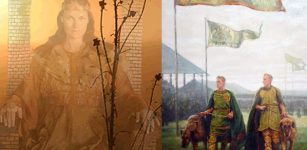 Tailteann Games: Ancient Irish Version Of The Olympic Games
Ancient History Facts | May 15, 2016
Tailteann Games: Ancient Irish Version Of The Olympic Games
Ancient History Facts | May 15, 2016 -
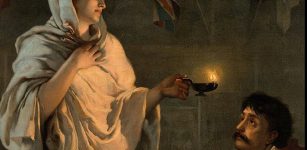 On This Day In History: ‘Lady With The Lamp’ – Florence Nightingale Was Born – On May 12, 1820
News | May 12, 2016
On This Day In History: ‘Lady With The Lamp’ – Florence Nightingale Was Born – On May 12, 1820
News | May 12, 2016 -
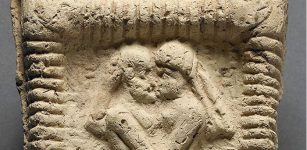 Humanity’s Earliest Recorded Kiss Occurred In Mesopotamia 4,500 Years Ago – New Study
Archaeology | May 18, 2023
Humanity’s Earliest Recorded Kiss Occurred In Mesopotamia 4,500 Years Ago – New Study
Archaeology | May 18, 2023 -
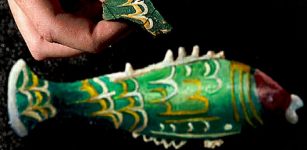 Rare 1,800-Year-Old Fragment From Fish-Shaped Roman Bottle Unearthed In Gloucestershire
Archaeology | Jul 23, 2019
Rare 1,800-Year-Old Fragment From Fish-Shaped Roman Bottle Unearthed In Gloucestershire
Archaeology | Jul 23, 2019 -
 Has The Viking Ship Burial Of King Bjørn Farmann Been Found At Jarlsberg Manor, Norway?
Archaeology | Jul 2, 2024
Has The Viking Ship Burial Of King Bjørn Farmann Been Found At Jarlsberg Manor, Norway?
Archaeology | Jul 2, 2024 -
 Strange Cave Drawings Of Unknown Beings And Animals In Japan Puzzle Historians
Ancient Mysteries | Dec 2, 2019
Strange Cave Drawings Of Unknown Beings And Animals In Japan Puzzle Historians
Ancient Mysteries | Dec 2, 2019 -
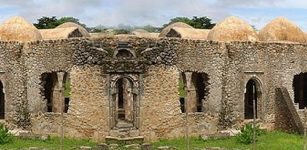 Ancient Ruins Of Kilwa Kisiwani And Songo Mnara: Great African Ports Long Abandoned And Forgotten
Civilizations | Nov 21, 2018
Ancient Ruins Of Kilwa Kisiwani And Songo Mnara: Great African Ports Long Abandoned And Forgotten
Civilizations | Nov 21, 2018 -
 Chonchon ‘Tue Tue’ Bird With Human Head Brought Bad Omens To Places It Haunted In Beliefs Of Mapuche Indians
Myths & Legends | Mar 12, 2024
Chonchon ‘Tue Tue’ Bird With Human Head Brought Bad Omens To Places It Haunted In Beliefs Of Mapuche Indians
Myths & Legends | Mar 12, 2024 -
 Archaeological Evidence Of Human Presence In America 250,000 Years Ago?
Featured Stories | Mar 5, 2024
Archaeological Evidence Of Human Presence In America 250,000 Years Ago?
Featured Stories | Mar 5, 2024 -
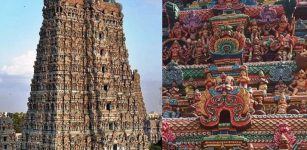 Meenakshi Temple Of Madurai Is Among Most Powerful Sacred Sites For Hindu People
Featured Stories | Apr 29, 2021
Meenakshi Temple Of Madurai Is Among Most Powerful Sacred Sites For Hindu People
Featured Stories | Apr 29, 2021 -
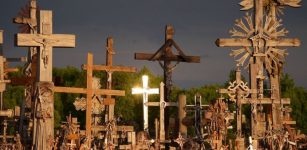 Hill Of 100,000 Crosses In Lithuania Survived Against All Odds
Featured Stories | May 23, 2017
Hill Of 100,000 Crosses In Lithuania Survived Against All Odds
Featured Stories | May 23, 2017 -
 Controversial Hollow Earth Theory – Scientific Facts Presented By Researchers – Part 1
Ancient Mysteries | Jun 21, 2019
Controversial Hollow Earth Theory – Scientific Facts Presented By Researchers – Part 1
Ancient Mysteries | Jun 21, 2019 -
 Isaac Newton Believed Egyptian Pyramids Held Key To The Apocalypse – Unpublished Manuscripts Reveal
News | Dec 10, 2020
Isaac Newton Believed Egyptian Pyramids Held Key To The Apocalypse – Unpublished Manuscripts Reveal
News | Dec 10, 2020 -
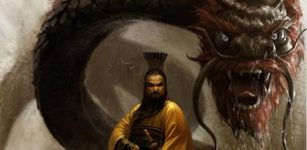 Mysteries Of The Yellow Emperor – The ‘Son Of Heaven’ From Regulus
Chinese Mythology | Oct 10, 2021
Mysteries Of The Yellow Emperor – The ‘Son Of Heaven’ From Regulus
Chinese Mythology | Oct 10, 2021

